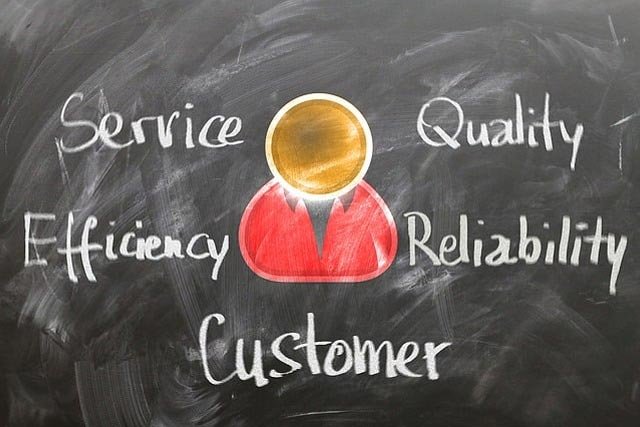Customer-centricity requires aligning the entire company around the customer’s needs. This includes culture, strategy, and multichannel communications.
It also means ensuring that every employee, from product managers to the frontlines, understands customers and their experiences. It requires a new level of centrally located, cleaned, and enriched data to make it actionable.
1. Build a Customer-Centric Culture

The key to success in customer-centricity is creating an organization-wide culture that prioritizes customers. This isn’t something that can happen overnight, and it requires the leadership of an entire company to make a change that will impact every single employee. Incorporate customer-centricity into your business’s core values and mission statement so that it is the driving force behind everything you do. This will help guide your employees’ decisions and actions and show them you are serious about putting your customers first.
Implementing customer-centric practices throughout your business will be much easier with the right culture. A customer-centric company will ensure that all team members understand the importance of providing an exceptional experience and how their work directly impacts customers’ lives. It will also encourage employees to take ownership of their work, increasing customer satisfaction and loyalty.
To create a customer-centric culture, it is important to establish clear training and communication throughout the company. This can be done through workshops, coaching sessions, and other forms of learning that will help your teams develop the skills and knowledge they need to succeed in a customer-centric environment. Providing consistent feedback and recognition is important so your team feels empowered to deliver the best possible customer experiences.
A data-driven, customer-centric culture focuses on improving areas that impact customers the most. Identifying and addressing frustrations promptly is crucial. Ultimately, this culture positively impacts customers’ lives, profitability, and retention rates. Prioritizing customer needs builds trust, creates loyal advocates, and drives new sales.
2. Understand your Customers

According to Enterprise Agility Consulting, Customer-centricity is a core business philosophy requiring a fundamental shift in companies’ operations. It is a difficult goal, but it can be done with a little effort and the right tools. To start, it is important to understand your customers. Without this knowledge, meeting their needs and creating a positive experience for them is impossible.
Fortunately, there are many ways to obtain customer data and gain insights into their thoughts, feelings, and beliefs. Loyalty programs, surveys, and reviews are just a few of the tools that can be used to gather this information. By analyzing this data and improving the customer experience, you can increase customer lifetime value (CLV).
To understand customers, view them from internal and external perspectives. Put yourself in their shoes, and consider touch points like websites, calls, meetings, and deliveries. Neglected premises, unfriendly staff, or unanswered emails can impact customer experience, signaling a lack of understanding.
Additionally, delve into customers’ motivations through data analysis. Surveys reveal true pain points and underlying issues. Addressing deeper problems yields surprising results.
Lastly, ensure all employees grasp customer-centricity and their role in meeting needs. Democratize customer insights, granting access to data. For instance, Adobe Systems shares customer calls with employees through listening stations, fostering awareness of their contributions to customer satisfaction.
3. Invest in Technology

The best customer-centric companies are those that make the customer experience a priority for every decision, big or small. This can be a difficult shift to embrace as it involves changing company culture and requires everyone from executives on down to understand that the value of keeping customers is higher than short-term costs.
Invest in the latest technology platforms for real-time customer data analysis and aligning employee performance. This builds a customer-centric brand, resulting in better experiences, loyalty, and increased revenue.
Adapting products to meet customer needs is crucial. Using a product-centric approach may hinder this. Building customer-centric processes enables better adjustment of products and services to changing consumer demand.
For instance, companies like Southwest Airlines, In-N-Out Burger, and Costco prioritize reflecting their audience’s wants, leading to customer satisfaction and increased loyalty.
Acquiring new customers is 5-25 times costlier than retaining them. Implementing customer-centric processes prioritizes retention over acquisition, yielding immediate benefits.
Customer-centric processes involve multiple departments, making management challenging due to differing priorities. Creating cross-functional teams and using technology to share insights fosters collaboration and ensures company-wide customer centricity.
4. Measure your Success

While many companies claim to be customer-centric, it’s hard to know whether they’re succeeding. Customer centricity is more than just a box to check — it’s a business methodology that needs to be baked into the company culture. This isn’t easy, and it requires a long-term commitment. Fortunately, there are ways to measure your success and ensure you’re on the right track.
The best way to measure your customer-centricity is to focus on the most important outcomes for your customers. This will help you develop better products and services and show that your efforts are paying off. In addition, it’s important to create a link between employee culture and customer outcomes. This will ensure that managers are motivated to cultivate a customer-centric culture and have the tools they need to do so.
Measure customer centricity using customer service channels, market research, and internal business stats. Augment this with a customer value score for a deeper, data-driven approach. Understand the value customers derive from your products/services and overall experience.
Chargebacks 911 enhances onboarding and customer retention through a customer-centric approach. They gather each new customer’s pain points and product alignment, enabling personalized recommendations that exceed expectations. This fosters a sense of value and boosts loyalty.
Creating a customer-centric organization is crucial for achieving business success. By prioritizing customer needs and building stronger relationships, companies can improve customer and employee experiences. This customer-centric approach helps attract and retain customers, leading to greater success. Start prioritizing customers today and reap the benefits of increased customer and employee attraction.





